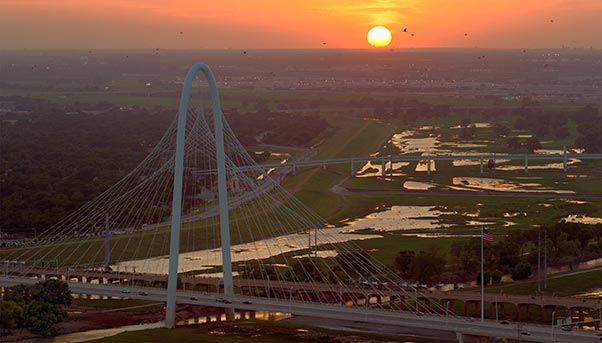
Houston, we have a problem: Texas infrastructure is in a poor state. Just look at the two old dams in Harris County that threatened to collapse under the strain of heavy rains last April. The U.S. Army Corps of Engineers were forced to intervene in extremis.
But this is not just a Texas problem. If the U.S. economy were to have an Achilles’ Heel, it would be the poor state of its infrastructure. It is not by chance that the average score given by the American Society of Civil Engineers (ASCE) to the country’s infrastructure is a D+, meaning a little more than sufficient.
The fact is that improving the country’s infrastructure has always been one of the big tests of every president, from Roosevelt to Obama. And now it will be the turn of Donald Trump, set to become the 45th president of the United States, to take on one of the biggest challenges of the country: rebuilding its infrastructure.
One of the states where he would have to start would be, in fact, Texas. The “Lone Star State” is not just the second biggest state in the union after Alaska. With a gross domestic product (GDP) of $1.6 trillion, it is one of the engines of the economy. Among the main pillars of its economy is the manufacturing sector, worth 14.3% of the state’s GDP. Other key sectors include construction (5.3%), mining (8.5%) and technology (8.6%).
Between 2010 and 2015, the Texan economy grew by an average of 3.7% a year. This is one of the reasons for the demographic boom: more than 27 million people live in the state compared with 25 million in 2010 – a growth of some 9%. And two of its cities rank among the top ten metropolitan areas of the United States: Houston and Dallas-Fort Worth. With numbers like these, it is obvious that Texas is one of the biggest logistical hubs of the country: more than 313,000 miles of roads including 11 Interstate highways and seven auxiliaries. There are also 380 airports, more than 10,000 miles of railway lines and 16 ports, including a major one in Houston. Texas is home to two major airlines: American and Southwest, which act as big sources of revenue for the local economy.
According to the ASCE, Texas infrastructure deserves a C. But there are lapses: the road network is underfunded and maintenance is inadequate (8% of roads are in “poor condition”). Nearly 2,000 dams are old and dangerous, while hydraulic tunnels are relatively few. Since 1990, the number of miles driven by cars has risen by 70%, while those driven by trucks 110%. The miles of roads crisscrossing the state, however, has grown by as little as 7%. So it should come as no surprise that traffic congestion is becoming more frequent, with bridges and roads under growing structural stress.

Texans are well aware of the problem. That explains why 83% of voters came out in favour of Proposition 7 in November, giving the government permission to add billions of dollars every year to the State Highway Fund from 2018 to 2032 when certain criteria are met. The fund would start spending that money on maintaining roads that have no tolls, and building new ones. Senator Robert Nichols, one of the proposition’s supporters, described it as the biggest increase in funding for transportation in the state’s history.
Support for the proposition is a good point of departure for the infrastructure development plan that President-elect Trump wants to pursue. The Texas Department of Transportation has already announced its readiness to work with the new administration to develop critical infrastructure. «As Texas continues to grow as one of the best places to work and live, transportation will remain a priority,» it said in a statement.
The state’s water infrastructure is its big weakness. In the next 20 years, ASCE sees the need to invest nearly $34 billion in aqueducts and other infrastructure. Other experts agree, seeing water as becoming a scarce natural resource in the 21st century. Draughts and water scarcity are already a daily constant in the lives of Texans, especially in small towns and areas in the western part of the state.
This motivated the U.S. Environmental Protection Agency (EPA) to sponsor the Cockrell School of Engineering at The University of Texas at Austin for a new research center to develop and improve open source water infrastructure models and share tools and research findings to assist local communities. «Cities around the world are struggling to manage flooding and pollution from storm water runoff, and climate change is making things even more urgent,» said EPA’s regional administrator, Ron Curry, in a statement. «UT Austin will help develop sustainable solutions to 21st-century water problems, while working with communities and coders to promote green infrastructure.»
All of this is to avoid that the combined forces of climate change and demographics (the population is expected to more than double in the next 40 years) aggravate the state’s challenges, making it even more urgent the need to develop infrastructure for water collection, treatment and distribution.

